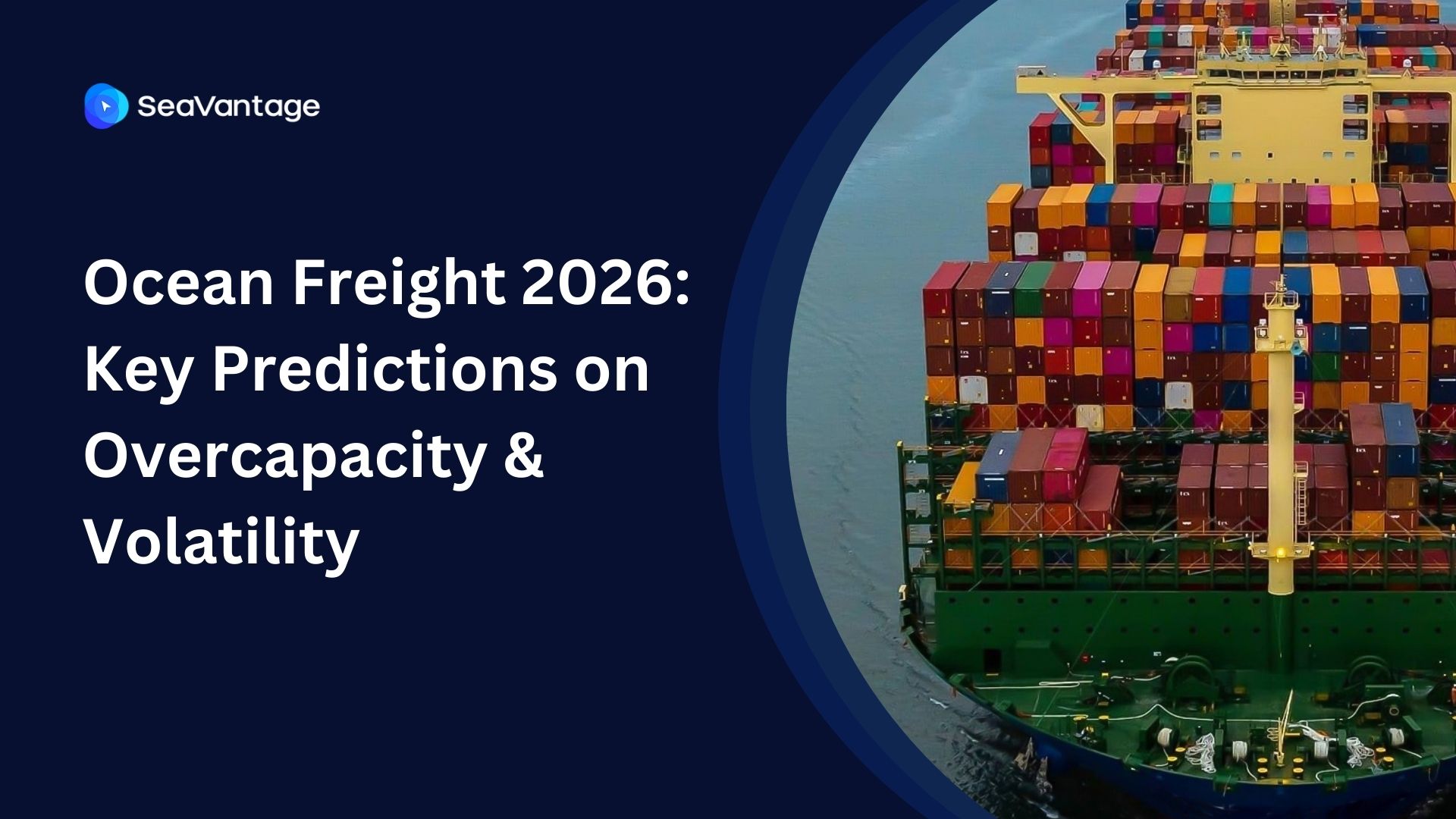Major Ports in China: Rankings, Capacities & Global Impact 2025
.jpg)
China’s major ports form the literal foundation of global maritime trade. They combine enormous scale, cutting-edge technology, and strategic positioning within economic corridors. In 2025, they continue to shape shipping patterns, decarbonization trends, and geopolitics—setting benchmarks for the rest of the world.
Top 5 Major Ports in China
Port of Shanghai
In 2024, Shanghai surpassed 50 million TEUs, becoming the first port ever to cross that threshold—a milestone reflecting both domestic demand and global export capacity. Its Yangshan deep-water facility, linked by the iconic Donghai Bridge, handles ultra-large container ships and plays a central role in Asia–Europe trade. Today, Shanghai is pioneering green-shipping corridors, notably with Los Angeles and Long Beach, signaling a shift toward sustainable global shipping. Even amid uncertain global markets, the port’s scale remains unmatched in China.
Port of Ningbo‑Zhoushan
Ningbo‑Zhoushan recorded between 33 and 39 million TEUs in 2024, consolidating its place as one of the world’s busiest ports. Its position at the mouth of the Yangtze River links long-haul sea cargo with massive inland waterways—a logistical advantage few ports can replicate. The port is leading in shore-power adoption for ships at berth, reducing emissions and improving air quality. Its efficient rail–sea intermodal connections also streamline inland freight flows.
Port of Shenzhen
Shenzhen moved between 27.7 and 30 million TEUs in 2024, and continues growing into 2025 with a 13% year-to-date increase. It specializes in high-value electronics and high-tech exports, with terminal clusters tightly integrated into the Greater Bay Area ecosystem. The port has also faced episodic congestion, especially around tariff deadlines, prompting accelerated automation and slot coordination. Today it stands as a barometer for China’s trade posture and innovation agenda.
Port of Qingdao
Qingdao handled about 25.8 million TEUs in 2024, reinforcing its status as a top-five container hub in the Yellow Sea region. The port is rapidly scaling capacity with ultra-large berths designed for 200,000-tonne vessels—a clear bet on future mega-ship growth. It's also pushing toward digitized gate operations and streamlined customs clearance to boost efficiency. Qingdao remains a vital springboard for manufacturing exports and Northeast Asian trade routes.
Port of Guangzhou
Handling roughly 25.4 million TEUs in 2024, Guangzhou continues to be a focal point for southern China’s exports. It manages both container and bulk cargo through a diverse terminal portfolio connected to road and rail networks. The port has recently initiated green-port ambitions—shifting toward electric equipment and shore-power facilities. Its strategic location close to industrial clusters ensures sustained relevance in regional supply chains.
China’s Port System at a Glance
From January to April 2025, China’s top ports collectively handled around 112.3 million TEUs—a 7.9% year-over-year increase. Total cargo tonnage over the same period reached approximately 5.75 billion tonnes, a 3.7% rise . Coastal mega-ports remain dominant, while inland hubs along the Yangtze—like Chongqing and Wuhan—are gaining fast. The top ten Chinese ports together processed an estimated 239 million TEUs in 2024, marking 7.1% national growth .
Trade Trends & Strategic Drivers
Shanghai is leading decarbonization efforts through bilateral "green corridors" with U.S. ports. Ningbo‑Zhoushan's shore-power and rail integration projects are boosting intermodal efficiency. Shenzhen has experienced surges in cargo volume during tariff-related demand spikes, prompting automation and slot-balancing improvements . Inland port development—particularly in Chongqing—is reshaping the logistics landscape, providing deeper connectivity into the Western interior .
Global Impact & Outlook
China now operates six of the world’s ten largest container ports—a testament to its export dominance and logistical prowess. While automation, green energy, and capacity expansion continue, ports face challenges from U.S. tariff volatility and global macroeconomic slowdowns. Ports across China are adapting through scalable infrastructure and resilient operational models. Looking ahead, they will remain unequivocal powerhouses in maritime trade, though global uncertainty requires continuous agility.
🔗 Related Insights
- Dive deeper into inland-vs-coastal throughput dynamics in our piece on port congestion and bunkering operations.
- Review predictive insights on chokepoint disruptions in the Strait of Hormuz, 2025 edition.
Frequently Asked Questions (FAQ)
1. What are the largest ports in China by container volume in 2025?
The five largest ports in China by TEU volume in 2025 are the Port of Shanghai, Ningbo-Zhoushan, Shenzhen, Qingdao, and Guangzhou. Shanghai leads globally with over 50 million TEUs annually, followed by Ningbo-Zhoushan with around 39 million.
2. How much cargo do China's ports handle annually?
In 2024, China's top 10 ports processed approximately 239 million TEUs. From January to April 2025 alone, major Chinese ports handled 112.3 million TEUs and over 5.75 billion tonnes of cargo—reflecting sustained growth in both container throughput and total tonnage.
3. Why is the Port of Shanghai considered the busiest port in the world?
Shanghai is the world’s busiest port due to its deepwater capacity, world-class infrastructure like the Yangshan terminal, and strategic location on the East China Sea. It’s a key node in global Asia–Europe trade and a pioneer in green shipping initiatives.
4. How is Ningbo-Zhoushan Port important to China's logistics network?
Ningbo-Zhoushan acts as a multi-modal hub linking coastal sea freight to inland China via the Yangtze River. Its advanced intermodal capabilities and adoption of shore power make it a leader in both efficiency and emissions reduction.
5. What is driving growth at the Port of Shenzhen in 2025?
Shenzhen’s growth is fueled by high-tech and electronics exports, a strategic location in the Greater Bay Area, and improvements in port automation. It also sees volume spikes tied to trade policy shifts, prompting better berth scheduling and congestion management.
6. What green technologies are Chinese ports using to reduce emissions?
Top Chinese ports are deploying shore power for docked vessels, electric cargo-handling equipment, and participating in global green shipping corridor programs—especially between Shanghai and ports like Los Angeles and Long Beach.
7. How are China’s inland ports contributing to national trade efficiency?
Inland ports like Chongqing and Wuhan are rapidly expanding their roles in domestic freight. Integrated rail and river transport networks are helping shift cargo from coastal bottlenecks deeper into China’s western interior.
8. Which Chinese ports are leading in port automation and digitization?
Shanghai and Qingdao are frontrunners in automation, using AI-powered terminal systems, smart cranes, and digitized gate operations to reduce turnaround times and increase operational accuracy.
9. How do Chinese ports impact global supply chain resilience?
Chinese ports anchor key shipping routes and account for a large share of global TEUs. Their role in absorbing tariff shocks, scaling capacity quickly, and innovating in automation helps maintain stability in volatile global logistics networks.
10. What challenges are Chinese ports facing in 2025?
Chinese ports face geopolitical risks, including U.S.–China tariff volatility, rising operational costs, climate-related disruptions, and the need to balance decarbonization with throughput growth.
2025년 9월, 주요 글로벌 항만에서 어떤 운송사가 가장 긴 선박 체류 시간을 기록했는지 확인해보세요. 트렌드를 비교하고, 지연을 파악하며, 전체 항만 데이터를 통해 운송 전략을 최적화할 수 있습니다.
2025년 8월, 주요 글로벌 항만에서 어떤 운송사가 가장 긴 선박 체류 시간을 기록했는지 확인해보세요. 트렌드를 비교하고, 지연을 파악하며, 전체 항만 데이터를 통해 운송 전략을 최적화할 수 있습니다.
2025년 7월, 주요 글로벌 항만에서 어떤 운송사가 가장 긴 선박 체류 시간을 기록했는지 확인해보세요. 트렌드를 비교하고, 지연을 파악하며, 전체 항만 데이터를 통해 운송 전략을 최적화할 수 있습니다.
Discover how RTTVP is a game-changer for Logistics Service Providers. Learn the 5 core benefits, from B2B customer experience to predictive operational planning.
Discover the top ocean freight predictions for 2026, from ship overcapacity to Suez Canal disruption, global sourcing shifts, and strategies for volatility.
Discover why container tracking breaks under complexity. Learn how B/L-based visibility improves ETA accuracy, boosts productivity, cuts TCO, and reduces data loss.



.svg)






.png)